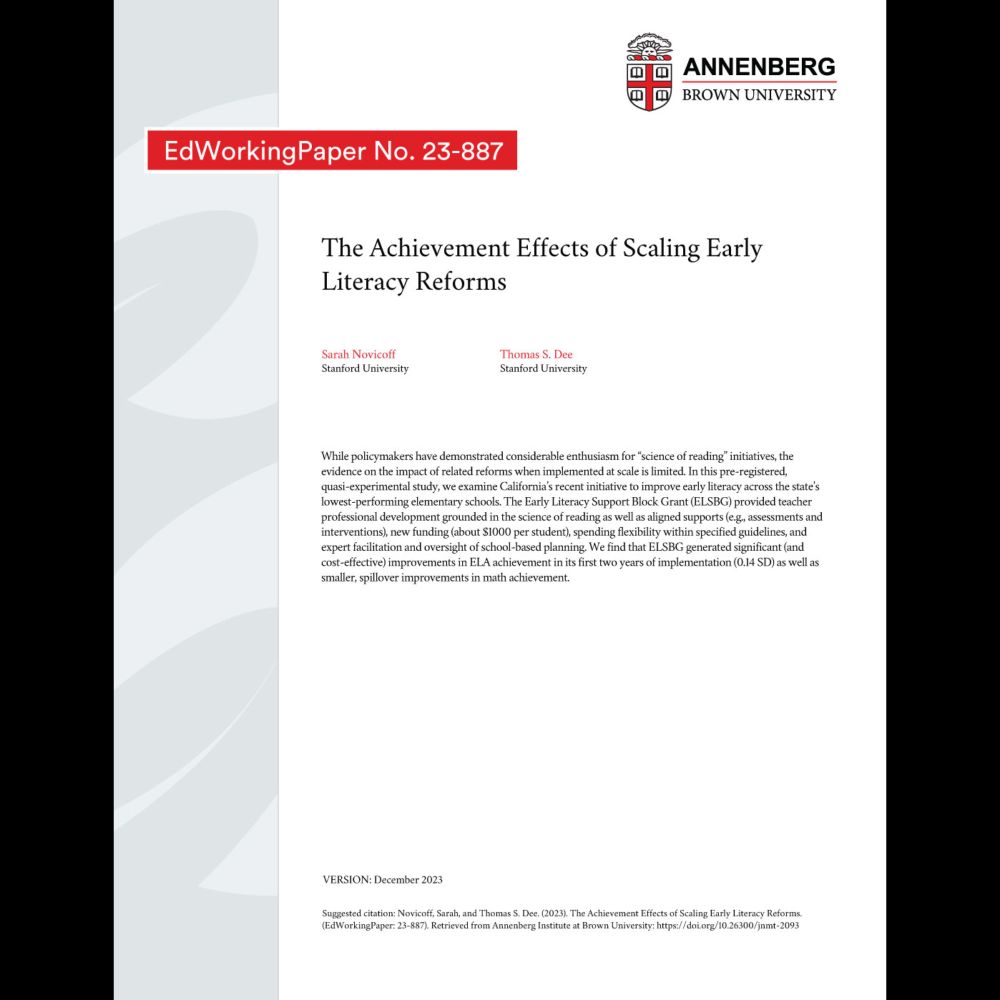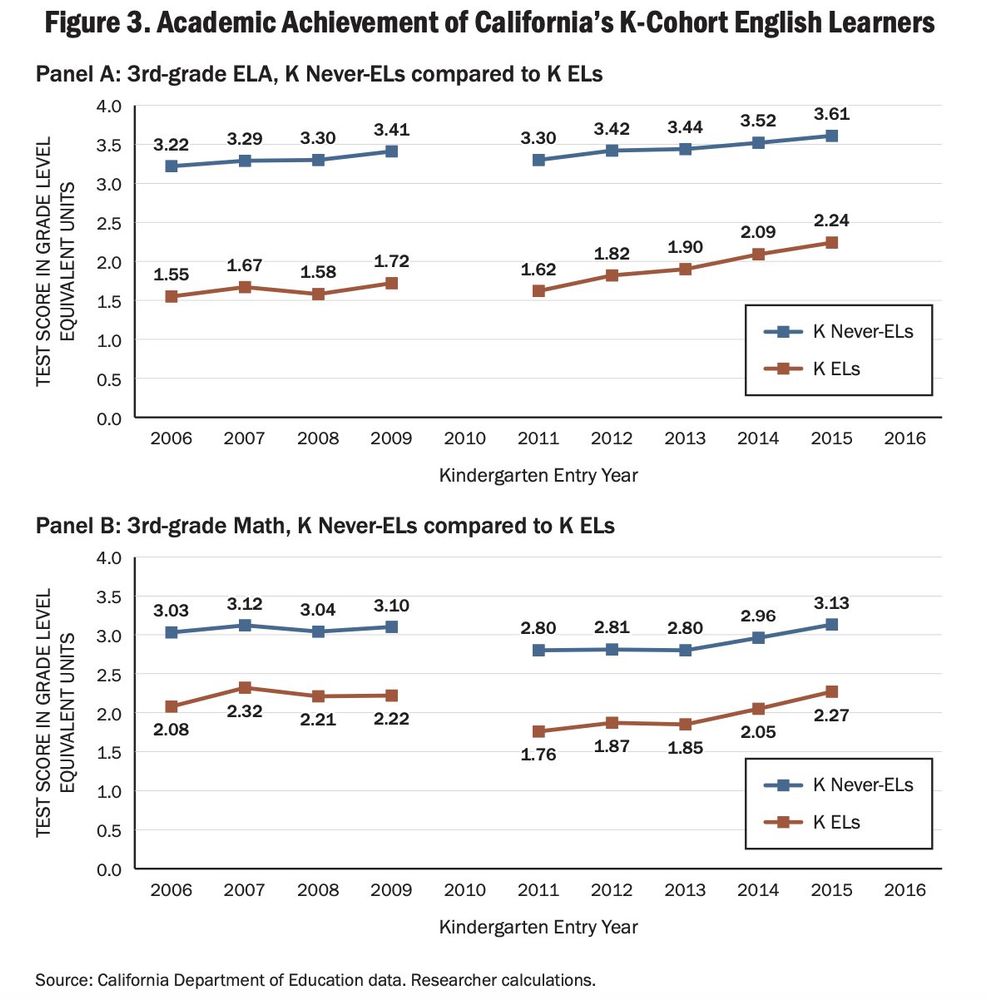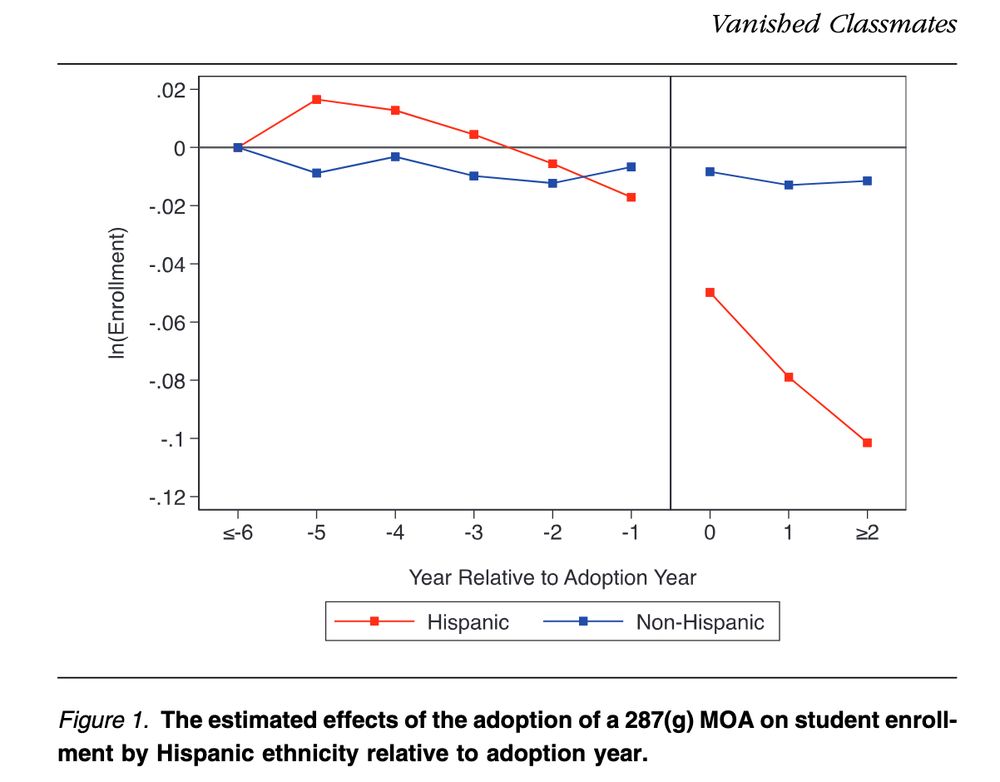Sarah Novicoff
@snovicoff.bsky.social
570 followers
160 following
24 posts
Researcher at PPIC. Former History teacher, Stanford & Brown alum. Fan of ice cream, hikes, and equity. All opinions are my own.
Posts
Media
Videos
Starter Packs
Sarah Novicoff
@snovicoff.bsky.social
· Mar 6
Sarah Novicoff
@snovicoff.bsky.social
· Mar 3

A Longitudinal Portrait of California’s Kindergarten English Learners & Their Learning Outcomes - Sarah Novicoff, Sean F. Reardon, Rucker Johnson, 2025
California’s K–12 funding and instructional policies for English learners have changed significantly over the past two decades. This paper uses student-level lo...
journals.sagepub.com
Sarah Novicoff
@snovicoff.bsky.social
· Mar 3
Sarah Novicoff
@snovicoff.bsky.social
· Nov 19
Sarah Novicoff
@snovicoff.bsky.social
· Nov 19
Sarah Novicoff
@snovicoff.bsky.social
· Nov 19
Sarah Novicoff
@snovicoff.bsky.social
· Nov 19
Reposted by Sarah Novicoff
Sarah Novicoff
@snovicoff.bsky.social
· Nov 18
Sarah Novicoff
@snovicoff.bsky.social
· Nov 18
Sarah Novicoff
@snovicoff.bsky.social
· Nov 11
Sarah Novicoff
@snovicoff.bsky.social
· Jun 10
Sarah Novicoff
@snovicoff.bsky.social
· Jun 10
Sarah Novicoff
@snovicoff.bsky.social
· Jun 10
Sarah Novicoff
@snovicoff.bsky.social
· Jun 10
Sarah Novicoff
@snovicoff.bsky.social
· Jan 3
Sarah Novicoff
@snovicoff.bsky.social
· Dec 4

The Achievement Effects of Scaling Early Literacy Reforms
While policymakers have demonstrated considerable enthusiasm for “science of reading” initiatives, the evidence on the impact of related reforms when implemented at scale is limited. In this pre-r...
doi.org
Sarah Novicoff
@snovicoff.bsky.social
· Dec 4
Sarah Novicoff
@snovicoff.bsky.social
· Dec 4

